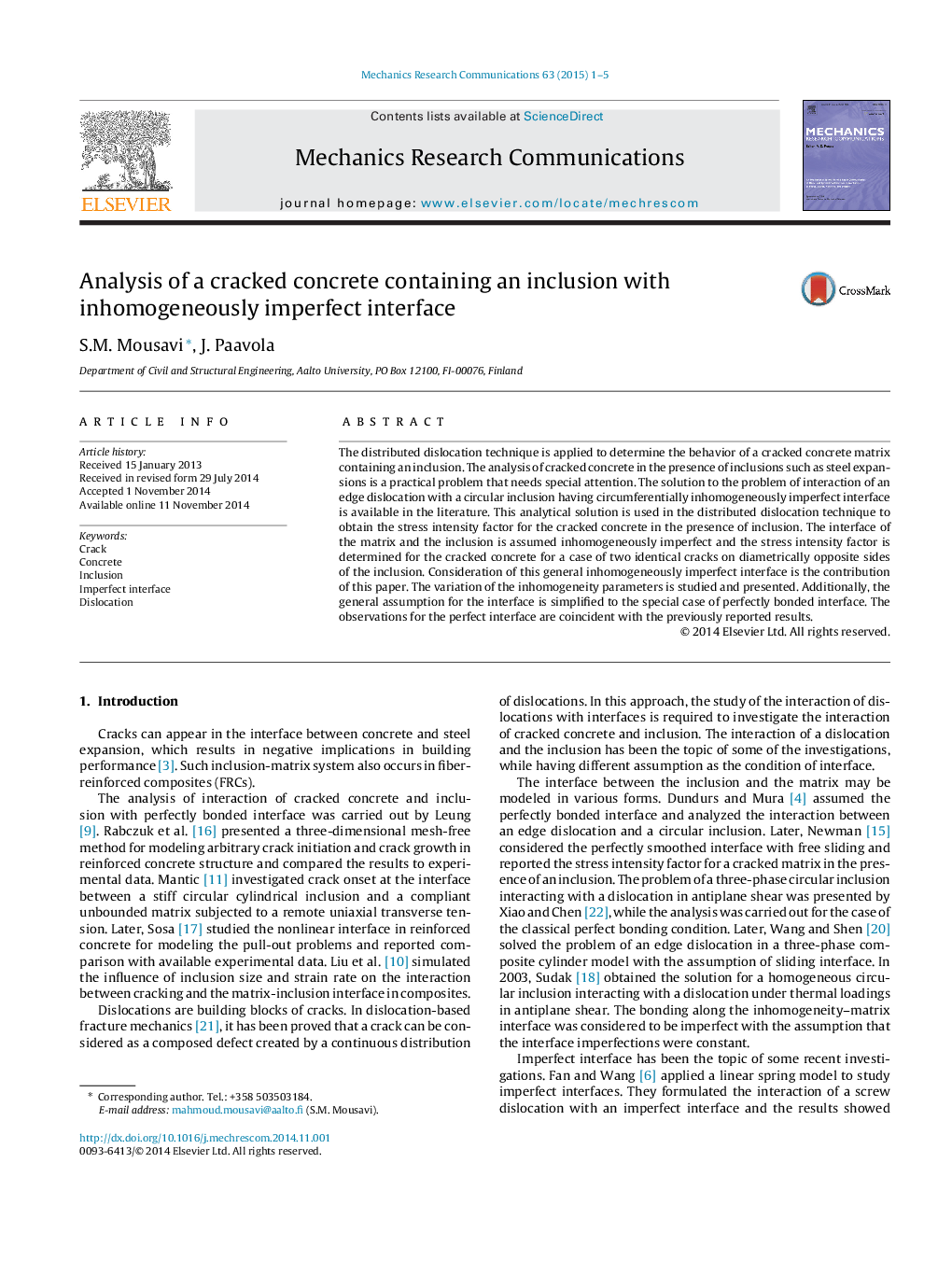| Article ID | Journal | Published Year | Pages | File Type |
|---|---|---|---|---|
| 800809 | Mechanics Research Communications | 2015 | 5 Pages |
•Interaction between a cracked concrete and an inclusion with imperfect interface is studied.•The dislocation-based fracture mechanics is used.•The parameters of inhomogeneity are effective on the stress intensity factor of the cracks.•There exists a critical crack length which depends on the values of interface parameters.
The distributed dislocation technique is applied to determine the behavior of a cracked concrete matrix containing an inclusion. The analysis of cracked concrete in the presence of inclusions such as steel expansions is a practical problem that needs special attention. The solution to the problem of interaction of an edge dislocation with a circular inclusion having circumferentially inhomogeneously imperfect interface is available in the literature. This analytical solution is used in the distributed dislocation technique to obtain the stress intensity factor for the cracked concrete in the presence of inclusion. The interface of the matrix and the inclusion is assumed inhomogeneously imperfect and the stress intensity factor is determined for the cracked concrete for a case of two identical cracks on diametrically opposite sides of the inclusion. Consideration of this general inhomogeneously imperfect interface is the contribution of this paper. The variation of the inhomogeneity parameters is studied and presented. Additionally, the general assumption for the interface is simplified to the special case of perfectly bonded interface. The observations for the perfect interface are coincident with the previously reported results.
